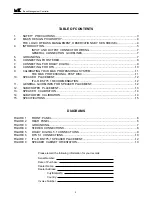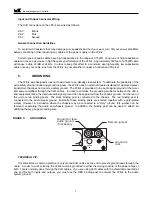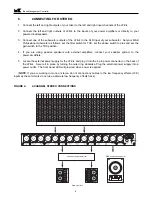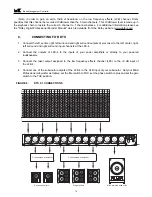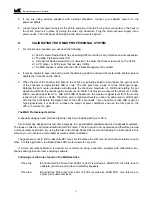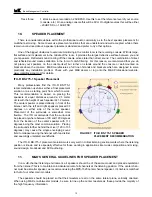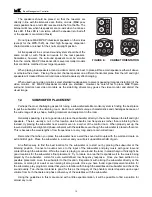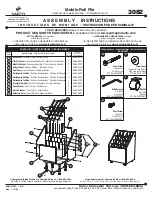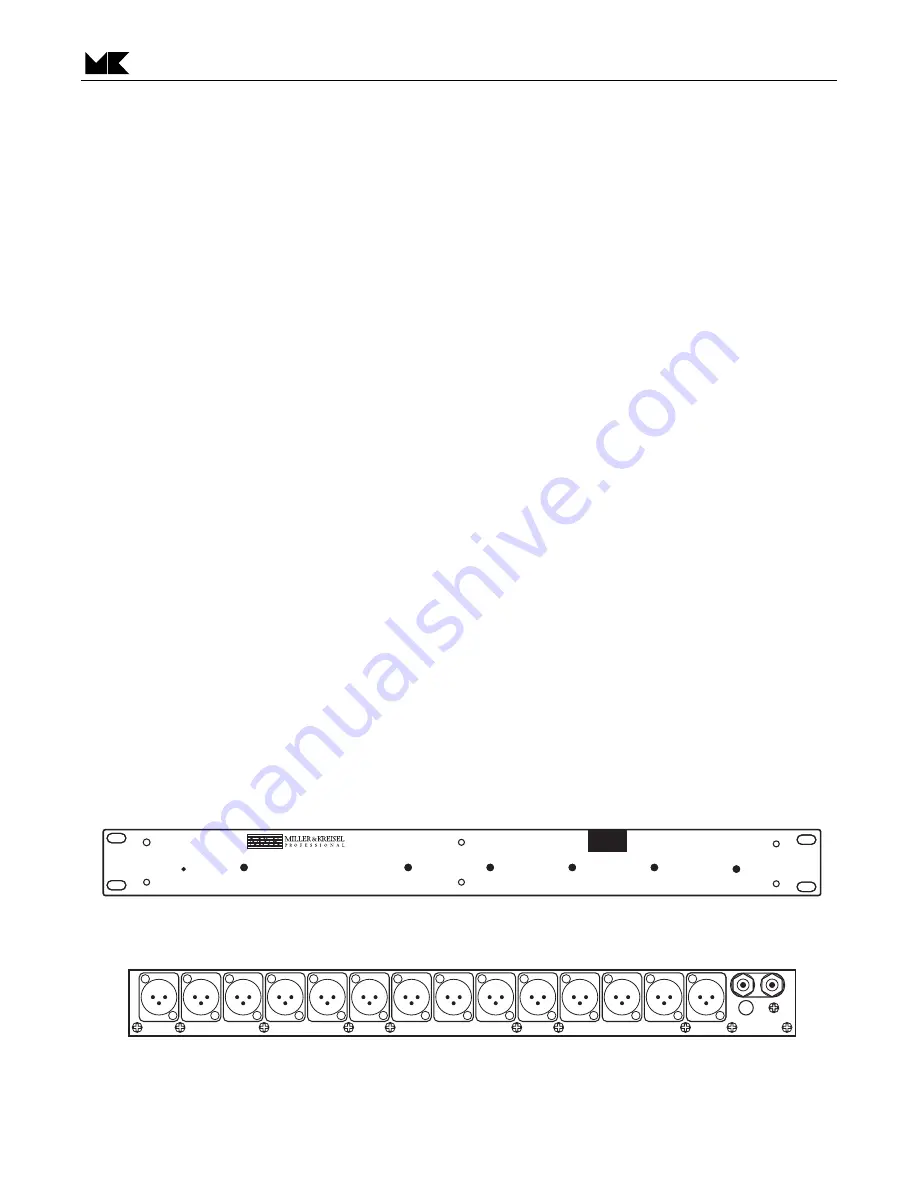
The LFE-4 consists of a series of five high-pass filters (one each for the L, C, R, LS, LR channels) that route
high frequency information (above 80Hz) to their appropriate channel’s amplifier and speaker monitor. Each
channel is also routed through a matching 80Hz low-pass filter. This low frequency information is then routed to a
summing amplifier, which in turn sends this low frequency information, along with the LFE channel, to two dual
subwoofer outputs.
This is done for two reasons. First, small loudspeakers cannot reproduce information below 80Hz. At least,
not with any authority. This information is therefore summed together and redirected from the individual channels
to a loudspeaker that can reproduce this low frequency information with clarity and power – a subwoofer. With the
introduction of digital audio, it has become necessary for loudspeaker systems to be able to accurately reproduce
audio that has a bandwidth of 20Hz to 20kHz with wide dynamics. A satellite/subwoofer system is the best way to
accomplish this.
Secondly, most home theater receivers have some form of bass management in their processors. In order for
work done in the studio to translate properly, the mixer must hear his mix exactly the way it will ultimately be played
back. The LFE-4 together with a properly set-up and calibrated M&K monitor system allows the mixer to hear his
work with more accuracy than might otherwise be possible.
The LFE channel is a discrete channel created by the mixer to supplement the low frequency content of the mix.
The subwoofer channel is the summed low frequency content from the five main channels plus the LFE
channel. It is created by the processor in the encoder/decoder of your chosen format, or in this case, the LFE-4.
The LFE-4 correctly balances these channels so the mixer can accurately hear how the format processor will
affect his mix.
The goal is to be able to accurately monitor multi-channel audio with a bandwidth of 20Hz to 20kHz
containing extreme dynamics and have that audio translate accurately when played back on other systems.
A properly set-up and calibrated M&K monitoring system with an LFE-4 will allow the mixer to make quick and
accurate decisions in a listening environment that he will find satisfying and enjoyable.
Bass Management Controller
6
Subwoofer
Left
Center
Right
Left Surround
Right Surround
LFE-4
Studio Bass Management Controller
RIGHT SUR
IN
RIGHT SUR
OUT
LEFT SUR
IN
LEFT SUR
OUT
RIGHT
IN
RIGHT
OUT
CENTER
IN
CENTER
OUT
LEFT
IN
LEFT
OUT
LFE IN
+0 dB
LFE IN
+10 dB
SUB OUT
1
SUB OUT
2
24 VAC
IN
CHASSIS
GND
SIGNAL
GND
FIGURE 1:
LFE-4 FRONT PANEL
FIGURE 2:
LFE-4 REAR PANEL


